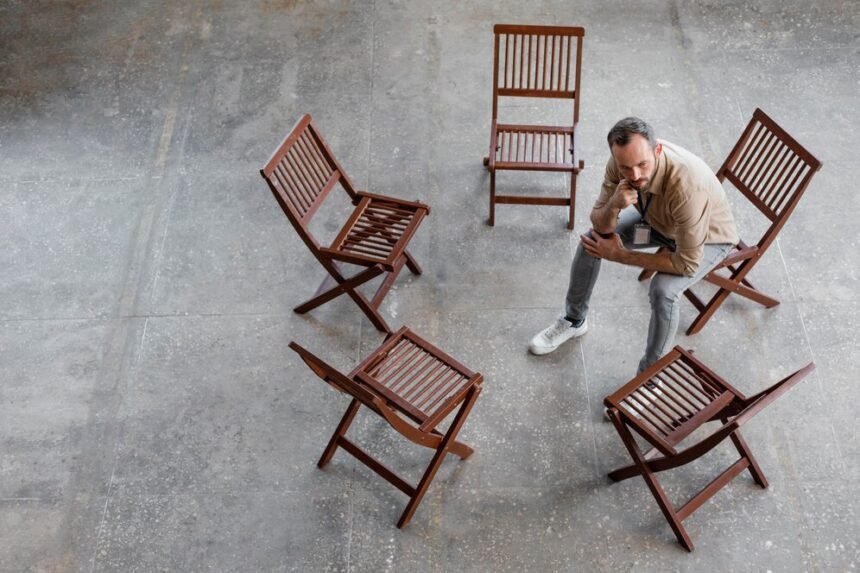University life can be exciting, challenging, and overwhelming all at once. The pressure to excel academically, manage personal responsibilities, and fit into social circles can sometimes lead to serious mental health issues among students. In response to this growing concern, universities worldwide are exploring innovative solutions like anti-suicide seating to support their students’ mental health.
Understanding the Concept
So, what exactly is anti-suicide seating? Essentially, it’s a thoughtfully designed seating arrangement that aims to prevent suicide attempts by making it difficult for individuals to harm themselves. These seating structures are typically found in high-risk areas like rooftops, bridges, and balconies on campus.
The Growing Mental Health Crisis in Universities
Mental health issues among university students have reached alarming levels. According to recent statistics, nearly one in five students suffers from anxiety, depression, or related mental health conditions. The academic pressure, coupled with the challenges of adjusting to a new environment, can exacerbate these issues, making it crucial for universities to take proactive measures.
Features of Anti-Suicide Seating
Anti-suicide seating comes with various design elements aimed at enhancing safety. These might include sloped edges to prevent sitting, materials that are difficult to climb, and integrated emergency communication devices. The idea is to create a physical environment that discourages harmful behavior while promoting safety and well-being.
Implementation Strategies
Integrating anti-suicide seating into university campuses requires careful planning and collaboration. Universities should work closely with mental health professionals to identify high-risk areas and design appropriate seating. Engaging architects and safety experts can ensure the seating blends seamlessly with existing campus infrastructure while maintaining its primary function.
Case Studies of Successful Implementations
Several universities have already seen positive results from implementing anti-suicide seating. For instance, the University of Melbourne introduced such measures on their campus bridges, resulting in a noticeable decrease in suicide attempts. Similarly, Cornell University’s extensive mental health program includes architectural modifications, which have been highly effective.
Impact on Student Well-being
The benefits of anti-suicide seating go beyond mere prevention. These measures can significantly enhance the overall psychological well-being of students. Knowing that their university is taking tangible steps to ensure their safety can foster a sense of security and belonging, which is crucial for mental health.
Challenges and Considerations
Despite its benefits, implementing anti-suicide seating is not without challenges. Universities might face budget constraints, resistance from stakeholders, and logistical issues. Additionally, there’s a need to balance safety measures with respect for student privacy and autonomy.
Role of University Administration
University administrations play a pivotal role in the success of these initiatives. By establishing supportive policies, providing training for staff and faculty, and fostering an environment where mental health is prioritized, administrators can make a significant impact.
Student and Community Involvement
Encouraging students to participate in mental health initiatives can be incredibly beneficial. Peer support groups, mental health awareness campaigns, and open dialogues about mental health can create a more supportive and understanding community.
Technological Integration
Technology can further enhance the effectiveness of anti-suicide seating. Universities can develop apps that allow students to report concerns, access mental health resources, and connect with counselors. Additionally, integrating monitoring systems can help in assessing the impact and effectiveness of the seating.
Funding and Resources
Securing funding for anti-suicide seating and other mental health initiatives can be challenging. Universities can explore various funding sources, including government grants, private donations, and partnerships with mental health organizations. Allocating these resources effectively is crucial for the success of these programs.
Future Directions
As mental health awareness continues to grow, so will the innovations in anti-suicide seating and related initiatives. Future directions might include more advanced designs, integration of AI for better monitoring, and broader mental health programs that address various aspects of student well-being.
Conclusion
Anti-suicide seating is a vital step towards creating a safer and more supportive university environment. While it’s not a complete solution, it represents a significant commitment to student well-being. Universities must continue to innovate and invest in mental health initiatives to ensure their students thrive both academically and personally.
FAQs
What is anti-suicide seating? Anti-suicide seating refers to specially designed seating structures that aim to prevent suicide attempts by making it difficult for individuals to harm themselves. These are often found in high-risk areas on university campuses.
How effective is anti-suicide seating? While anti-suicide seating is not a complete solution, it has proven to be effective in reducing suicide attempts in areas where it has been implemented. It works best as part of a broader mental health strategy.
What other measures can universities take? Universities can adopt various measures, including offering counseling services, conducting mental health awareness programs, establishing peer support groups, and creating a supportive campus culture.
How can students contribute to mental health support? Students can play a crucial role by participating in mental health initiatives, supporting their peers, engaging in awareness campaigns, and utilizing available resources to maintain their mental well-being.
Are there any risks associated with anti-suicide seating? The primary concern with anti-suicide seating is ensuring it does not infringe on students’ privacy or autonomy. Proper design and thoughtful implementation can mitigate these risks, ensuring the seating serves its intended purpose without negative consequences.





